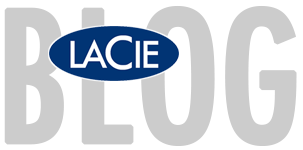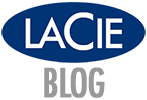If you work (or play) in the video industry, you’ve likely heard of the Society of Motion Picture and Television Engineers, or SMPTE. They’re the people responsible for bringing standards that facilitate interoperability, to the film and television industry — or simply put, they’re the people who make sure that you can actually see and hear a quality motion picture, no matter where or how it was produced. From the days before even the of the first talkies to 4K Ultra HD, SMPTE has been on the leading edge of technology. And as technology has progressed, so too have data storage needs.
The Technology behind Moving Images
Howard Lukk from Pannon Entertainment volunteers as SMPTE’s Standards Director, one of the organization’s nearly 6,200 members and volunteers spread out across the world. Former vice president of production technology at The Walt Disney Studios, Lukk was named as director for Moving Images, a documentary that details the history of SMPTE — from its chartering in the early days of 1916 by a United States government that saw the film industry’s potential during wartime, through the early days of television and into today’s HD-dominated world. And considering SMPTE’s focus on technology, it shouldn’t surprise anyone that the film is being shot in 4K. Doing this, however, has its challenges.
“We shot with two Canon C500s, because it can shoot uncompressed 4K,” explains Lukk. “We picked up some codex recorders to capture the raw, uncompressed data, but each card can only hold about 25 to 27 minutes of footage. It ends up being about 3 TB of data per day that we need to store.”
What’s more, any storage solution has to be as mobile as the documentary crew — able to be carried in airports and sustain the rigors of traveling, while providing exceptional reliability. This focus on mobility and reliability were what drove Lukk’s decision to choose the LaCie 5big Thunderbolt 2 for Moving Images’ data storage needs. But it was the speed of the LaCie 5big Thunderbolt 2 that really set it apart from the competition.
Moving at the Speed of Movies
Lukk’s prior storage solution had consisted of a series of smaller single drives with USB 3.0 connections, making data transfer a huge hassle. That all changed with the LaCie 5big’s Thunderbolt connection and 5 7200 rpm drives RAIDed together, which allows for transfer speeds of up to 785 MB/s. This has allowed Lukk to cut out more than 8 hours of time, every single day, which had been spent transferring data between drives.
Another huge benefit has been the portability afforded by the relatively small size and weight of the LaCie 5big compared to other 30 TB solutions. Rather than shipping drives via courier service or leaving them at the mercy of cargo handlers, Lukk can carry the drives directly onto a plane himself in a custom Pelican case. This provides Lukk with the protection and peace of mind he needs from a storage solution.
“The LaCie 5big was a no-brainer,” said Lukk. “It’s the first storage option in that size with the Thunderbolt connection, and from using LaCie in the past, I know just how reliable they are. You really can’t put a value on the peace of mind that comes from knowing that the great footage you shot that day is safely and reliably backed up.”
With interviews from the likes of George Lucas already in the can, Moving Images is intended to investigate the influence that art and science have on each other.
“It’s been fantastic working with LaCie,” said Lukk. “They understood the requirements really quickly, and the process has been very easy. Storage is moving so fast right now, and I’m really looking forward to the next line of LaCie products.”
Learn more about SMPTE >
Learn more about Howard Lukk >

